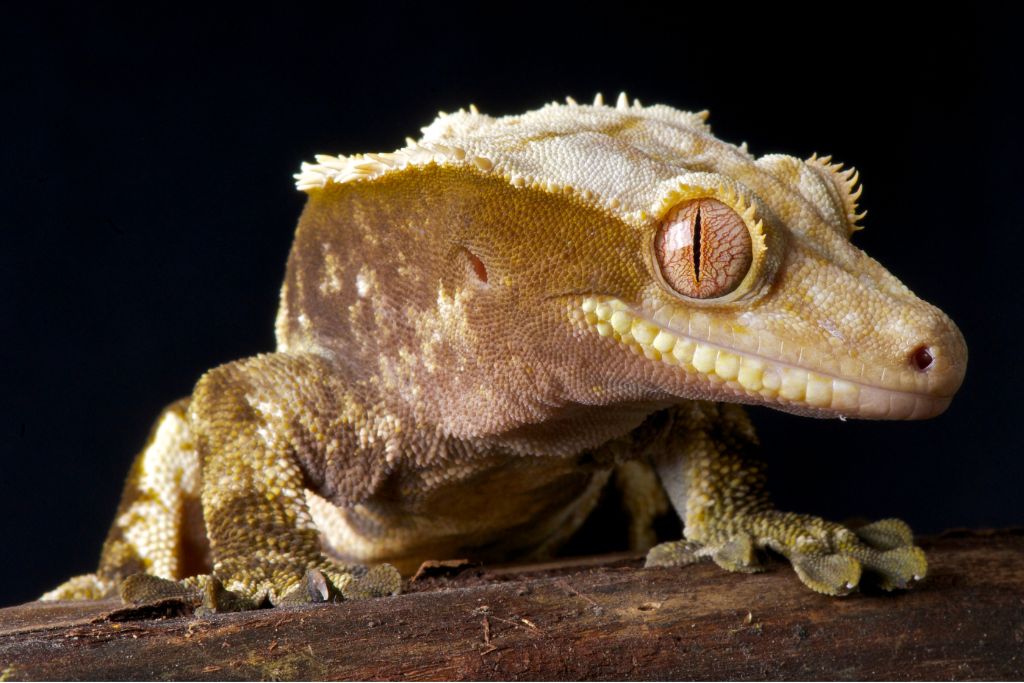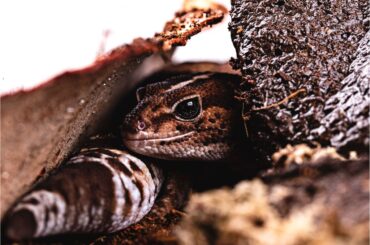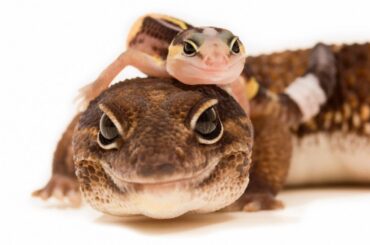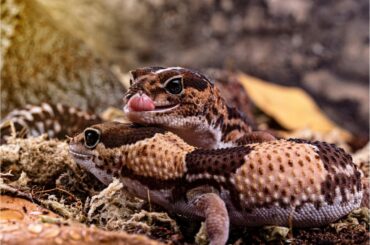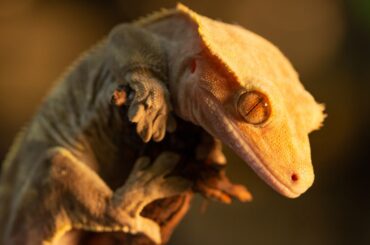Do crested geckos stay up all night, partying in their vivariums, or do they prefer the tranquility of the dark? Get ready to learn about these fascinating creatures’ unusual sleep patterns!
Due to their attractiveness and friendliness, crested geckos make great pets. With their characteristic head and rear crests, these geckos always look ready for a tropical fashion show. But when it comes to their daily routines, there’s a bit of mystery shrouding their sleep habits.
Want to know if crested geckos are crepuscular or nocturnal? Prepare to uncover crested geckos’ secret life and the fascinating realm of the night!
Understanding Nocturnal and Crepuscular Behavior
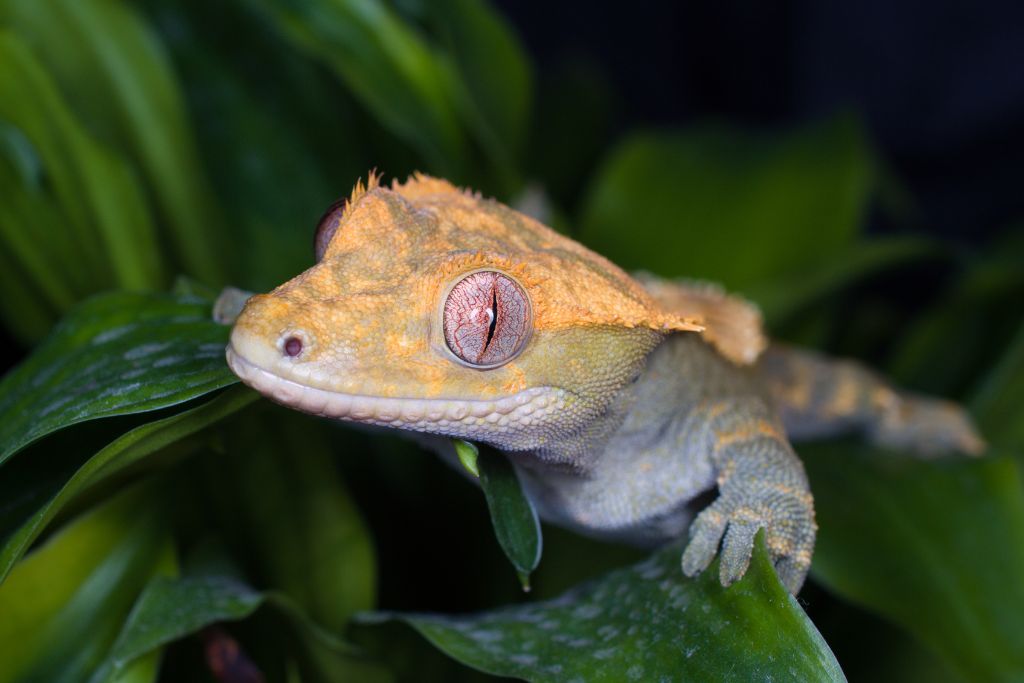
Nocturnal animals are the night owls of the animal kingdom. They are the ones who love to dance and play in the moonlight. Think of bats, owls, and raccoons – these animals thrive when the sun takes its much-needed nap.
Crepuscular animals are like the early birds of the party. They’re the ones who catch the groove during the sunrise and sunset, like deer and rabbits. These behaviors are like nature’s way of giving everyone a chance to shine on the dance floor. Many animals, from tiny insects to mighty predators, have adapted to these lifestyles.
Nocturnal and crepuscular creatures have evolved to make the most of their unique time slots. Nighttime is when the air is cooler, and the stars twinkle – perfect for those who like a bit of mystery. Animals that are crepuscular take great pleasure in the beautiful hues of dusk and dawn.
The Crepuscular Nature of Crested Geckos
Crested geckos, those enchanting little creatures with distinctive crests, have a unique lifestyle. They are crepuscular, meaning they are active at dawn and dusk. Unlike nighttime creatures, crepuscular animals enjoy the lovely times before sunrise and sunset.
Being crepuscular brings a set of advantages for crested geckos. As the day transitions into night, or night into day, there’s a special kind of lighting called twilight. During these times, the world is not too bright and not too dark. This dim lighting is ideal for crested geckos’ sensitive vision and navigation.
This is their golden chance to explore, discover tasty treats, and possibly talk with another gecko. These crepuscular critters have their feast in the twilight while most of us are relaxing or waking up!
When are Crested Geckos Most Active?
These fascinating creatures are most active during the evening and night, making them nocturnal beings. Here are the factors influencing their activity patterns:
Temperature
Crested geckos love warmth, and their activity levels are often influenced by temperature. They tend to be more active in warmer environments, exploring their surroundings and showcasing their quirky behaviors.
Territorial Behavior
Just like us, crested geckos have their favorite spots. Their activity can be influenced by the presence of other geckos or the need to defend their territory. You’ll likely see them confidently moving about if they feel comfortable and secure.
Mood and Health
Crested geckos, much like us, can have varying moods. They are more likely to engage in activities if they are healthy and content. Monitor their well-being, as any changes might affect their energy levels.
Light
Leopard geckos are crepuscular, meaning they are most active during dawn and dusk. The mild, natural light mimics their wild surroundings, making these times perfect for hunting, exploring, and interacting.
Hiding Spots
Just like us seeking a cozy nook for relaxation, leopard geckos have their hiding spots. The availability of secure hiding places influences their activity levels. They are more likely to venture out and showcase their playful side if they feel safe and sheltered.
Food
Leopard geckos are known for their love of food. The availability of prey items impacts their activity patterns. After a good meal, they may become more active, engaging in a hunting spree or simply digesting their delicious feast.
Social Interactions
These creatures are not solitary beings. The presence of other geckos in their habitat can significantly influence their behavior. Social interactions, such as territorial displays or friendly encounters, control their movement.
Seasonal Shifts
Leopard geckos are attuned to seasonal changes. As temperatures and daylight hours fluctuate, so does their activity. During the breeding season, you may observe increased activity levels as they engage in courtship rituals and mating behaviors.
Sleep Behavior in the Wild
In the wild, crested geckos follow a distinctive sleep routine quite different from ours. These geckos are creatures of the night, preferring to stay up and about when the moon takes over the sky.
During the day, they aren’t fans of the spotlight. Instead, they opt for cozy hideouts in leaves or branches, cleverly dodging the blazing sun and any potential daytime foes.
When the light is too bright or the neighboring predators are noisy, these geckos know how to nap. They sleep 12 to 13 hours daily, presumably while we’re still working.
Come nighttime, that’s when they’re in their element. Crepuscular crested geckos are active, exploring their environment, hunting bugs, and associating with other night owls. While we’re winding down for bedtime, these little gecko buddies are gearing up for their nocturnal adventures!
Sleep Behavior in Domestic Environments
Crested geckos are the sleep champs! These little lizard buddies have a knack for adapting to a cozy slumber routine while living the domestic dream.
Imagine a gecko’s crib – their cozy enclosures. It’s like their secret nap haven! These scaled companions love to curl up in hiding spots throughout the daylight hours, taking lounging to a whole new level. It’s not that they’re lazy; it’s just how they roll. If you catch your gecko taking a daytime siesta, don’t fret! It’s as regular as sunrise and sunset.
You might be thinking, Why in the daytime? Well, it’s all in their lizard DNA. Crested geckos groove to their internal rhythm, which means lights out during the day.
Conclusion
The fascinating crested geckos adore the wonderful twilight hours. With their sleek bodies and intelligent eyes, these fantastic creatures thrive during crepuscular periods, or dawn and dusk. Understanding and appreciating this peculiar habit is crucial for their overall well-being.
By recognizing and respecting their crepuscular nature, we can positively impact their lives. Offering places that mirror sunrise and sunset light helps them feel at home and improves their physical and mental health.
FAQs
Do Crested Geckos Sleep with Their Eyes Open?
No, crested geckos typically close their eyes when they sleep.
How Long Do Crested Geckos Sleep?
Crested geckos are crepuscular, so they generally sleep during the day, resting for about 12 to 13 hours.
Can I Get My Crested Gecko Out During the Day?
While you can handle your crested gecko during the day, they may be more active and receptive during the evening or night. It’s best to take them during the evening when they are more active.
Are Geckos Active at Night?
Yes, crested geckos are generally more active at night and may be less active during the day.

